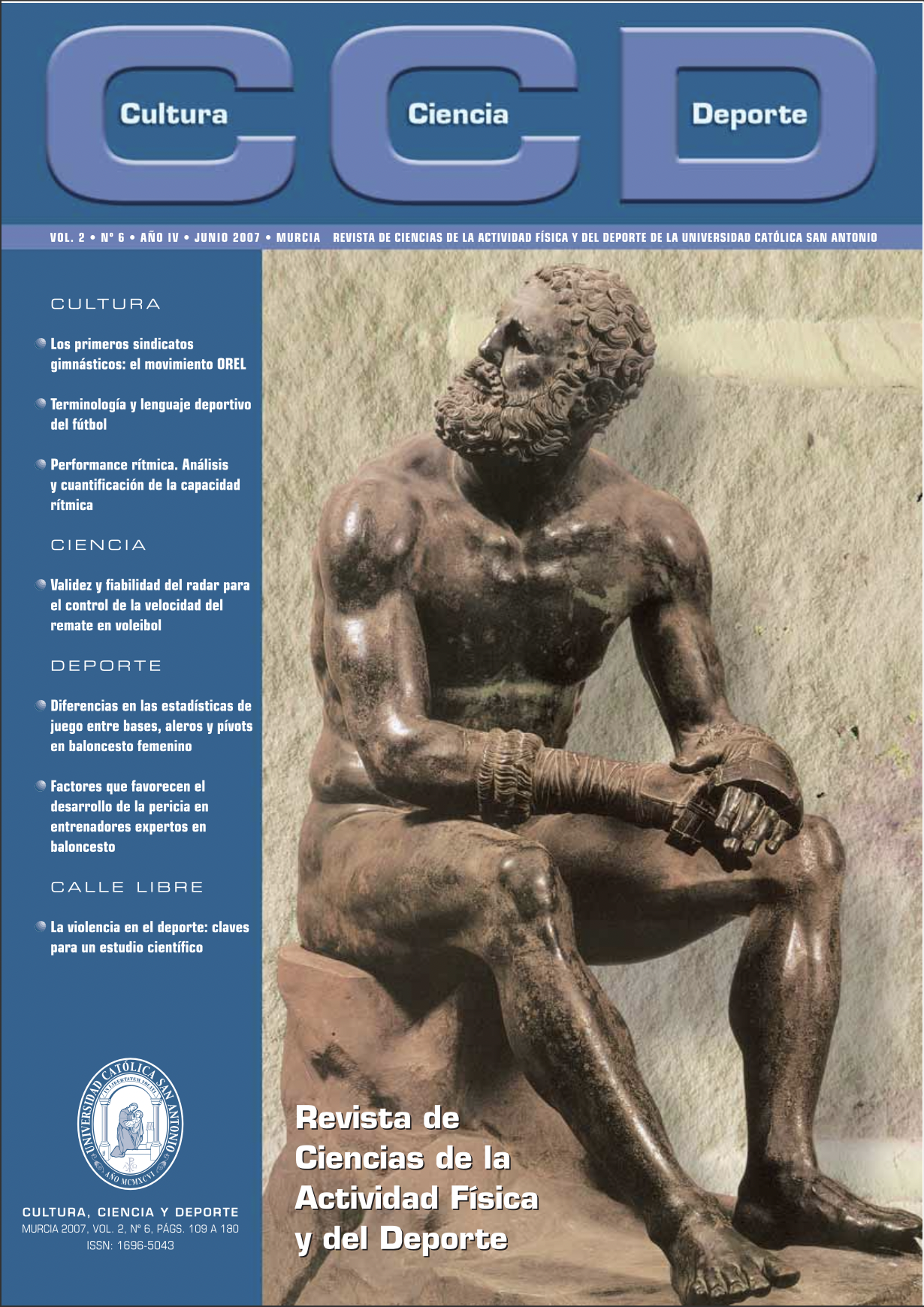Validez y fiabilidad del radar para el control de la velocidad del remate en voleibol. (Validity and reliability of radar to spike speed control in volleyball).
DOI:
https://doi.org/10.12800/ccd.v2i6.185Abstract
El presente trabajo se enmarca en el proceso de dar validez y fiabilidad a un protocolo de test que sirva para el control de la velocidad del remate a nivel de entrenamiento e investigación. El trabajo tiene dos objetivos: a) comprobar la validez del radar al registrar la velocidad del balón en el remate, y b) establecer la distancia de ubicación del radar respecto a la red, que permita obtener datos fiables de la velocidad máxima del balón en el remate. Se realizó un doble estudio para conseguir los objetivos de la investigación. Veinticuatro jugadoras de superliga participaron en el primer estudio, y cuatro jugadoras de superliga participaron en el segundo estudio. En el primer estudio, la velocidad del balón en el remate se midió con el radar y con análisis fotogramétrico a partir de la filmación realizada. Los datos obtenidos muestran una correlación de 0,98 entre los registros tomados por el radar y los obtenidos del análisis fotogramétrico. En el segundo estudio, el radar se ubicó a cuatro, cinco, seis y siete metros de distancia de la red para registrar las velocidades imprimidas al balón en la ejecución del remate. Los resultados obtenidos muestran que la ubicación ideal del radar para registrar la velocidad del remate debe ser a una distancia de 5 metros de la red. Esta ubicación fue la que presentó mayor estabilidad de los registros, medias de velocidades más altas y menor coeficiente de variación.
Palabras clave: validez, fiabilidad, test, radar, voleibol, remate.
===
Abstract
The present study is one step in establishing of validity and reliability of way of doing the measurement of the speed ball in practice and research studies. The purpose of this study was double: 1) to check the reliability of the speed registration and 2) to establish the adequate localization of the radar with respect to the net. A double study was done to achieve the objectives of the study. Twenty-four female players from professional Spanish first division participated in the first study and four female players from professional Spanish first division participated in the second study. In the first study, the ball speed was measured with a gun radar and a photogrametric analysis from the record done. The results obtained show a correlation of 0.98 between the data of the results that were obtained with the radar and the photometric analysis. In the second study, the radar was localized to four, five, six, and seven meters from the net. The results obtained show that the radar should be localized five meters from the net. This localization presented higher stabilization, higher speed average, and less coefficient of variation.
Key words: validity, reliability, test, radar, volleyball, spike.
Downloads
How to Cite
Issue
Section
License
The authors who publish in this journal agree with the following terms:
- The authors retain the copyright and guarantee the journal the right to be the first publication of the work as well as licensed under a Creative Commons Attribution License that allows others to share the work with recognition of the authorship of the work and the initial publication in this journal.













